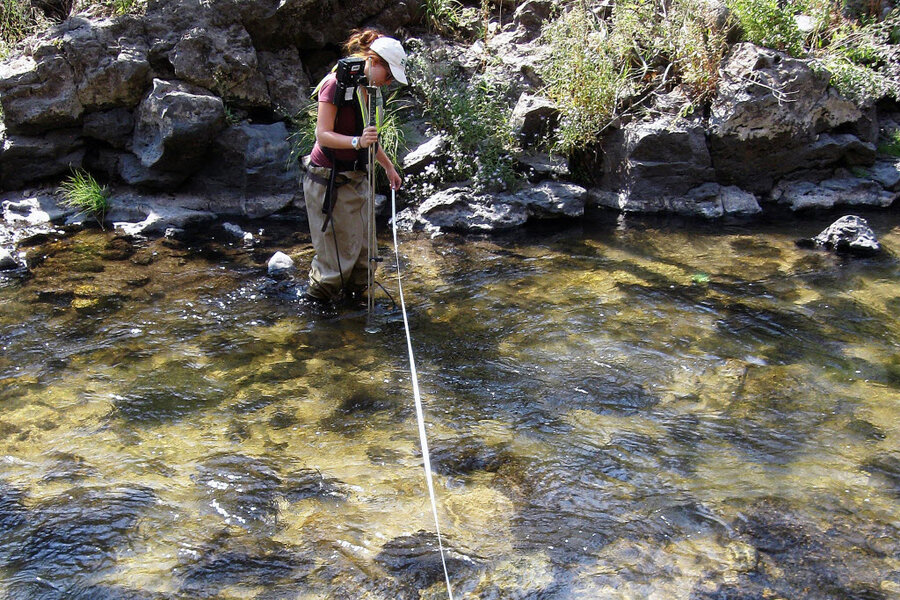With snowpack at 500-year low, hydrologists fish for coping strategies
Loading...
Western mountains are seeing record low snowpack this year and it could have broad reaching implications.
A study released Monday revealed that 2015 marks the lowest snowpack that the Sierra Nevada mountains in California has seen in 500 years.
While this frozen water has shrunk, precipitation in western states has been about average this year. But rain alone cannot wash away the drought.
Snowpack in the mountains serves as a sort of reserve, melting slowly during the warmer summer months, filling the streams, and watering lower-elevation land. Rain, on the other hand, flows downhill and gathers in basins all at once, not replenishing water sources in the same consistent way as snowpack.
So, what can be done?
The US Geological Survey is gathering data for a report on stream flow to determine just that. Using data gathered through September in almost 500 streams in California, Idaho, Nevada, Oregon, Utah and Washington, the report will help officials make decisions managing water usage.
The report will help many organizations consider how best to manage and prevent troublesome drought conditions more broadly as well. The data gathered could help with decisions about dam releases, grazing spaces for cattle, water allotments for farming irrigation, and support for rivers holding endangered and protected fish – all important considerations when streamflow is low.
The streams studied, mostly in upper tributaries, will help researchers determine what areas are most vulnerable in the face of low snowpack and if there is accessible ground water to help balance the lack of melt from snowpack.
"Groundwater can act kind of like a buffer," Dave Evetts, data chief at the USGS Idaho Water Science Center, told the Associated Press. "They're going to know based on snowpack and precipitation amounts which areas may be impacted more severely by that kind of drought situation."
This year has been rough, but researchers don’t expect to face these difficulties every year.
"This is pretty extreme by historical standards," Chris Konrad, a research hydrologist with the USGS and the study’s project chief, told the AP. "I don't know that we can expect this kind of year frequently. But at the same time, we also know climate models are telling us we should expect warmer winters and in some years less snowpack. If we see one year like this, it's likely that we'll see more years like this."
The USGS study, costing about $465,000, will help communities be more prepared for future dry years. Officials say the report will be published in 2016.
This report uses material from the Associated Press.








